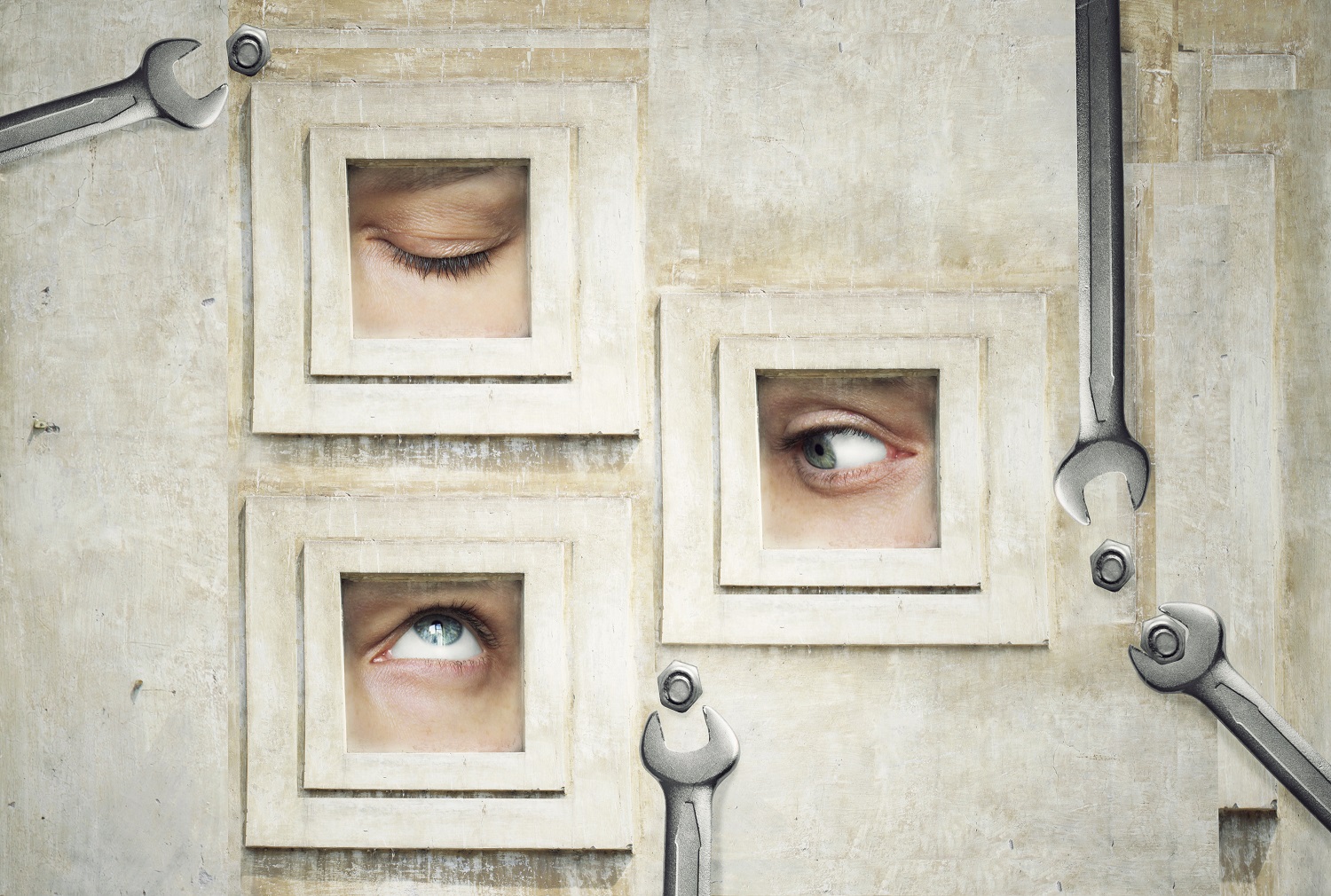
Guided imagery (GI) has been used to diagnose illness, to mobilize the body’s defenses, and to promote natural healing processes for time immemorial. According to a recent meta-analysis (Kuiken, 2004), clinicians deploy four main types: pleasant imagery, mental rehearsal or reframing, physiologically focused imagery, and receptive imagery. The first involves the creative visualization of a scene that inspires positively charged sentiments like tranquility and security, the second imagining and mentally reframing an imminent task in an optimistic light before its actual unfolding, the third personifying the biological agents implicated in the healing process as military personnel (Achterberg, Dossey, & Kolkmeier, 1994; Donaldson, 2000), and the fourth using imagination to scan the physical body for the source of the illness (Horrigan, 2002).
GI is esoteric in nature and deeply rooted in a heterogeneous group of religious and spiritual traditions, however the contemporary illumination of its underlying psychophysiological mechanism of action has contributed to a successful adoption by physicians, psychologists, and other health care practitioners as an adjunct to more conventional healing methods. Within the sphere of human cognition, image-based communication precedes the development of secondary process thinking (i.e. semantic language, analytical reasoning) and is intimately connected with the primary processes (memory, emotion, motivation, and behavior) of the limbic networks and the involuntary physiological functions of the brainstem (Bresler, 1979). Held in the mind’s eye long enough, a visual image will generate an emotional appraisal along with an autonomic response. Think of a saccharine ice-cream or favorite chocolate long enough and you’ll start to salivate–this is activation of the sympathetic branch of the Central Nervous System (CNS) through higher order image-based language, if you like.
The nature of the autonomic response depends on whether the image is emotionally appraised as positive or negative. Negative appraisals stimulate the ergotropic, excitatory neurotransmitters serotonin and norepinephrine to activate the sympathetic branch of the CNS (Hobson, 1994), thus setting into motion the known fight-or-fight response; oxygen and glucose are transported to target areas where they are needed most (the heart and muscles) in order to expedite the relevant motor responses necessary for the organism’s immediate extrication from externally perceived threats. Anything liable to interfere with the built-in survival instinct (i.e. digestion in the stomach and intestines, salivation, and arousal for reproductive purposes) is suppressed. On the other hand, positive emotional appraisals stimulate the trophotrophic neurotransmitter acetylcholine to decelerate heart rate, slow breathing by constricting the bronchi, and stimulate internal functions to do with cellular recuperation and general maintenance through the parasympathetic branch of the CNS (Hobson, 1994). The partition and nature of brain-body labors shared by these two chemical systems connotes a direct involvement with psychosomatic functionality and balance, and therefore with health.
The intimate link between autonomic activation, immunity, and health extends back to the first half of the twentieth century (McMillan, 1999), when Russian scientists working to consolidate Pavlov’s paradigm found that guinea pigs and rabbits subjected repeatedly to a dual prescription of a trumpet blast and a bacteria injection became conditioned to the associational network so that eventually sound alone could elicit an immune response. This form of top-down causation between the unconscious mind and the immune system, or the limbic brain and physiology, was explored further by the co-founder of psychoneuroimmunology, the psychologist Robert Ader (1932-2011), and his associate Nicolas Cohen; in their experiments (Ader & Cohen, 1975) methodical injections of a cocktail comprised of saccharin and an immunosuppressant in lab rats inevitably forged an association between the mental prescription of sweet or anything sweet-tasting and immune suppression. Roughly two decades later Howard Hall (1989) took the final plunge into behaviourism’s no-man’s land, daring to utilize scientific advances in microbiology to authenticate past clinical anecdotes implicating the unconscious mind as the eternal wellspring of anomalous healing. Deploying strict experimental controls he was able to demonstrate beyond all reasonable doubt how conscious GI interventions and self-hypnosis increased white cell stickiness, thus enhancing immune function. Historically, it was the first empirical demonstration of conscious mind manipulating matter. In the last twenty years the psychoneuroimmunological dialectic has unearthed linkages between the nervous and immune systems on the cellular level by identifying neurons in bone marrow, areas of white blood cell production and storage (Zeller, McCain, & Swanson, 1996).
Having thus determined an empirical interconnection between image-based cognition, the autonomic nervous system, and the immune system, it seems logical then to deduce that immunological responses can be hindered or amplified through visual imagery. Images buttressed by negatively charged impressions like helplessness, depression, and a sense of resignation breed negative emotion, inhibiting immune and inflammatory responses, while positive ones mobilize the latter and heal. This is why sustained moods of one kind or another can become self-fulfilling prophecies with the power to either plunge one into the decadence of low energy, disease, and clinical demise or extricate them from that dis-ease, depending on the nature and emotional appraisal of the content. Unconscious attitudes and symbolic realities about the severity of one’s condition and oneself are instrumental in predetermining the efficacy of the therapeutic outcome, that is, whether the patient surmounts or capitulates to the physical ailment. In one experimental study exploring emotional appraisals attached to mental imagery, Simonton, Matthews-Simonton, & Creighton (1978) found a statistically significant correspondence between intrinsic beliefs and treatment outcomes. Visual symbolizations whereby somatic defenses and self were perceived as being superior to microscopic invaders frequently catalyzed recuperation whereas cases in which the former were perceived as subservient to the latter culminated with clinical death.
Of the primitive circle of defense mechanisms chronic stress is by far the deadliest. When the emotions associated with the images are appraised negatively by self, the threshold response of the hypothalamic-pituitary-adrenal (HPA) axis to stress plummets and corticotrophin releasing hormone (CRH) is pumped into the body (Cozolino, 2010). CRH modulates the endocrine system via the release of cortisol. While in short bursts cortisol saturation is a wonderful built-in evolutionary innovation because it catabolizes proteins for immediate use in the fight-flight response, more sustained levels will inhibit immunological functions like T-cell production and initiate metabolic alterations to existing sodium levels, leading to a forced annihilation of cell membranes and inevitably cell death (pp. 249-251). Over time the atrophy in neuroplasticity materializes anatomically as hippocampal reduction (pp. 252), inducing further psychological and behavioral alterations (i.e. depression) that might be explained as a consequence rather than an etiology of neuronal cell death. Previous studies have also supported a positive correlation between elevated CRH and anxiety and psychosomatic fatigue (Jallo, Ruiz, Elswick Jr, & French, 2014). Evident here is that causal relationships can indeed be inverted, with cognitive mechanisms indigenous to our nature being programmed to further effect nurture. Of course the detrimental psychophysiological response to perceived stressors and associated symptoms can be subverted by GI interventions with positive and optimistic imagery, as we will now see.
The explosion of GI as a valid therapeutic adjunct over the last decade is mirrored by its eminence in the scientific discourse of experimental psychology. Recently, a two-armed randomized controlled trial (Jain, McMahon, Hasen, Kozub, Porter, King, & Guarneri, 2012) illuminated the effectiveness of GI and healing touch interventions on a sample of 123 military personnel fraught with PTSD symptoms. Personnel allocated to the intervention or experimental group received two one-hour sessions of GI and healing touch for three consecutive weeks. A juxtaposition of self-report measures from all participants revealed a clinically and statistically significant reduction in PTSD symptoms (p < 0.0005, Cohen’s d = 0.85), in depression (p < 0.0005, Cohen’s d = 0.70), in cynicism (p = 0.001, Cohen’s d = 0.049), and in general life quality (p = 0.002, Cohen’s d = 0.58) for the intervention group only. Similarly, the qualitative fruits of a randomized two-group clinical trial investigating guided imagery as a therapeutic intervention for pain management and life quality in patients suffering from fibromyalgia (Menzies, Taylor, & Bourguignon, 2006) revealed an increase in pain tolerance (p = 0.03) and significant decreases in the perceived impact of the illness (p = 0.03) for the experimental group, respectively. Both sets of results imply that there was evanescence in the subjective experience of psychological stress.
Moreover, GI has been instrumental in alleviating the emotional stress, apprehension, and fatigue of patients suffering from cancerous tumors. Working with a pre and posttest consecutive experimental design, Lee, Kim, & Yu (2013) reported that patients undergoing radioactive iodine therapy after thyroidectomy experienced significant reductions in stress levels (f = 28.45, p < 0.001) and debilitating fatigue (f = 26.17, p < 0.001) after listening to a 13-minute guided imagery CD once a day for four subsequent weeks. The CD encompassed specific instructions on how to creatively visualize a peaceful scene, on listening to the relaxing sound of cascading waters, and on smelling an imaginary rose. For the researchers, the impetus to work with cancer patients was ignited by previous studies which had churned up empirical support for guided imagery as a strategic adjunct to more invasive, pharmacological, and radioactive medical procedures. Two specific cases stand out. While working with breast cancer patients, Richardson, Post-White, Grimm, Moye, Singletary, & Justice (1997) had noted significant reductions in perceived levels of stress and heightened feelings of optimism and wellbeing for the treatment group. Another study examining treatment outcomes for cancer patients in radiation therapy (Serra, Parris, & Carper, 2012) found that exposure to GI inhibited sympathetic response. Furthermore, all patients in the intervention group had declared GI to be genuinely constructive and helpful.
It seems this reduction in perceived levels of stress also extends to African-American women at the inception of their second trimester of pregnancy (Jallo et al., 2014). In a prospective longitudinal study, 72 pregnant women were randomly assigned to a non-intervention group and an intervention group. Those in the latter were requested to listen to a 4-track GI CD of 20-minute duration once a day over a 12-week course. All participants donated 5cc of blood at the baseline, 8-week, and 12-week mark so that the CRH, an organic measure of stress levels, could be quantified. The experimenters reported a decrease in the perception of stress, anxiety, and fatigue in the GI intervention group until about the 8 week mark. Kuiken (2004) has examined this curious phenomenon, that being the strength outcomes of GI practice interventions over time, through a meta-analysis of ten contemporary studies and reported that effect size for GI increases until about the seventh week, whereupon it culminates and then undergoes a precipitous decline in strength. The reason for the plateau effect at the 8-week mark remains unknown and is an area petitioning for study. In future, enforcing experimental rigor in the areas of explicit verbal reporting and biofeedback, structuring GI content, quantifying participants’ beliefs about the efficacy of GI treatment, increasing sample sizes, and incorporating personal preference into the methodology of the GI intervention may cogently answer this question.
In the last fifty years, a growing body of research (Kuiken, 2004; Horrigan, 2002; Donaldson, 2000; Achterberg et al., 1994; Hall, 1989; Bresler, 1979; Simonton et al., 1978) has demonstrated beyond reasonable doubt a miraculous yet authentic top-down connection between higher-order image-based communication, the emotional self, and physiological responses from the autonomic nervous and immune systems. This has reinvigorated clinical and experimental interest in the primordial esoteric practice of GI as a possible therapeutic adjunct, particularly in relation to perceived levels of stress, the mobilization of immunological responses, general wellbeing, life quality, and longevity. Randomized trials conducted with a heterogeneous group of stressed individuals including military personal suffering from PTSD symptoms (Jain et al., 2012), fibromyalgia (Menzies et al., 2006), oncologic patients (Lee et al., 2013; Serra et al., 2012; Richardson et al, 1997), and pregnant African-American women (Jallo et al., 2014) have all garnered support for GI as an effective intervention strategy and adjunct to the more traditional and invasive circle of surgical, pharmaceutical, and electromagnetic interventions. Despite the accumulating evidence in support of GI, pioneering researchers cannot reach a consensus regarding the exact cognitive, neural, and immunological mechanisms responsible for these effect sizes. Of course such clarification depends on time, resources, and available funding for scientists working in psychoneuroimmunology, a field still in its infancy. Or should I say in its dawning?
References
Achterberg, J., Dossey, B., & Kolkmeier, L. (1994). Rituals of healing. New York: Bantam.
Ader, R., & Cohen, N. (1975). Behaviorally conditioned immunosuppression. Psychosomatic Medicine, 37(4), 333-340.
Bresler, D. E., & Trubo, R. (1979). Free yourself from pain. New York: Simon & Schuster.
Donaldson, V.W. (2000). A clinical study of visualization on depressed white blood cell count in medical patients. Applied Psychophysiology and Biofeedback, 25, 117-128.
Gruzelier, J.H. (2002). A review of the impact of hypnosis, relaxation, guided imagery, and individual differences on aspects of immunity and health. Stress, 5, 147-163.
Hall, H. (1989). Research in the area of voluntary immunomodulation: complexities, consistencies, and future research considerations. International Journal of Neuroscience, 47 (1-2), 81-89.
Hobson, J.A. (1994). The chemistry of conscious states. New York: Little, Brown and Company.
Horrigan, B. (2002). Marty Rossman, MD, Imagery: the body’s natural language for healing. Alternative Therapies in Health and Medicine, 8(1), 80-89.
Jaffe, D.T., & Bresler, D. E. (1980). The use of guided imagery as an adjunct to medical diagnosis and treatment. Journal of Humanistic Psychology, 20, 45-59. doi: 10.1177/002216788002000407
Jain, S., McMahon, G., Hasen, P., Kozub, M., Porter, V., King, R., & Guarneri, E.M. (2012). Healing touch with guided imagery for PTSD in returning active duty military: a randomized control trial. Military Medicine, 177(9), 1015-21.
Jallo, N., Ruiz, R.J., Elswick Jr, R.H., French, E. (2014). Guided imagery for stress and symptom management in pregnant African-American women. Evidence-based Complementary and Alternative Medicine, 2014, 1-13. Retrieved from http://dx.doi.org/10.1155/2014/840923
Kuiken, D.V. (2004). A meta-analysis of the effect of guided imagery practice on outcomes. Journal of Holistic Nursing, 22, 164-179. doi: 10.1177/0898010104266066
Lee, M.H., Kim, D., & Yu, H.S. (2013). The effect of guided imagery on stress and fatigue in patients with thyroid cancer undergoing radioactive iodine therapy. Evidence-based Complementary and Alternative Medicine, 2013, 1-8. Retrieved from http://dx.doi.org/10.1155/2013/130324
McMillan, F. D. (1999). Influence of mental states on somatic health in animals. Journal-American Veterinary Medical Association, 214, 1221-1225.
Menzies, V., Taylor, A.G., & Bourguignon, C. (2006). Effects of guided imagery on outcomes of pain, functional status, and self-efficacy in persons diagnosed with fibromyalgia. The Journal of Alternative and Complimentary Medicine, 12, 23-30.
Richardson, M.A., Post-White, J., Grimm, E.A., Moye, L.A., Singletary, S. E., & Justice, B. (1997). Coping, life attitudes, and immune responses to imagery and group support after breast cancer treatment. Alternative Therapies in Health and Medicine, 3(5), 62–70.
Rossman, M.L. (2000). Guided imagery for self-healing. Novato, CA: HJ Kramer/New World Library.
Serra, D., Parris, C.R., Carper, E. (2012). Outcomes of guided imagery in patients receiving radiation therapy for breast cancer. Clinical Journal of Oncology Nursing, 16 (6), 617–623.
Zeller, J., McCain, N., & Swanson, B. (1996). Psychoneuroimmunology: An emerging framework for nursing research. Journal of Advance Nursing, 23, 657-664.









